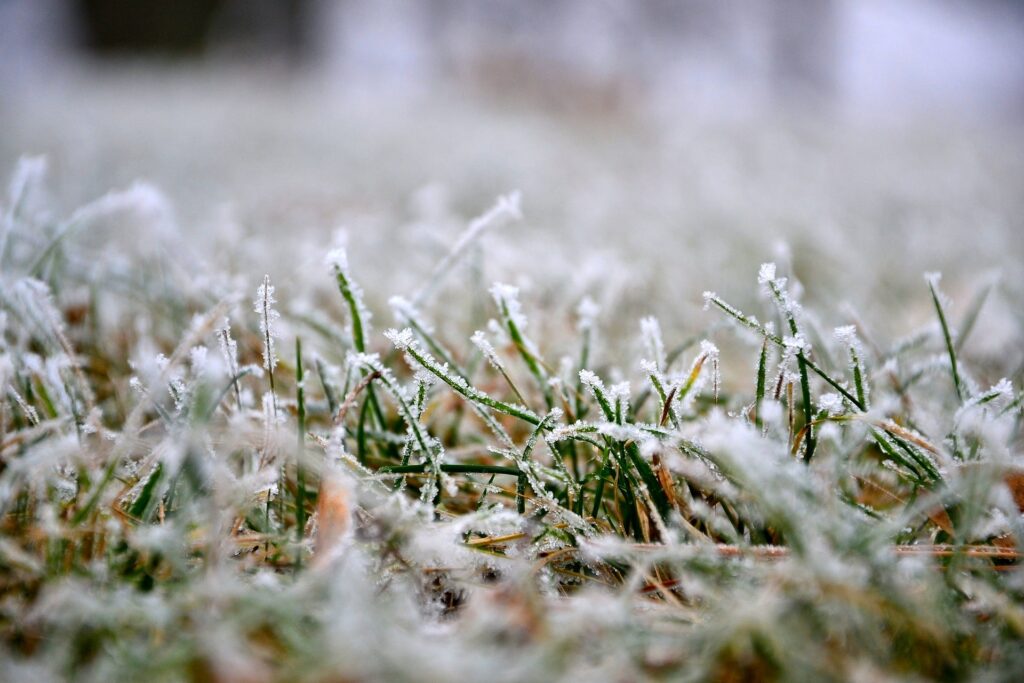How Does Frost Seeding Work?
Frost seeding is a cost-effective and efficient method of improving pastures, lawns, and forage fields without the need for traditional tilling or drilling. This method involves broadcasting seeds over frozen ground, and allowing the natural freeze-thaw cycles to work the seeds into the soil. As the ground expands and contracts, the seeds settle into the cracks, ensuring good seed-to-soil contact. Frost seeding is commonly used for improving the density of existing grasslands or introducing new species into a pasture. The primary benefits include reduced labor, lower equipment costs, and minimal soil disturbance, making it an excellent choice for landowners looking to enhance their fields naturally.
Ideal Conditions for Frost Seeding
For frost seeding to be successful, several key conditions must be met:
- Timing: The best time for frost seeding is late winter to early spring when temperatures are still fluctuating between freezing and thawing. This typically occurs from late February to early April, depending on the region.
- Soil Conditions: Frost seeding works best in areas with bare or thin grass cover, as this ensures better seed-to-soil contact. Heavy thatch or thick sod can prevent seeds from reaching the soil surface.
- Weather Patterns: Frequent freeze-thaw cycles are crucial, as they help to incorporate the seeds into the soil. If the weather warms up too quickly, the seeds may remain on the surface, reducing germination rates.
- Seed Selection: Legumes like clover and grasses such as orchardgrass or ryegrass are commonly used for frost seeding. These species germinate well with minimal soil disturbance while improving pasture productivity.
Step-by-Step Frost Seeding Process
Implementing frost seeding correctly involves careful planning and execution. Follow these steps to maximize success:
- Choose the Right Seeds: Select seed varieties that are well-suited to the local climate and soil conditions. Legumes like red and white clover work well, as do certain grass species like ryegrass and fescue.
- Prepare the Site: Inspect the field for bare spots or thin areas that need improvement. Mowing the existing vegetation short before winter can help expose more soil for better seed contact.
- Broadcast the Seeds: Use a broadcast seeder or hand spreader to evenly distribute the seeds over the frozen ground. Ensure uniform coverage, especially in areas with poor vegetation.
- Monitor Weather Conditions: The field should ideally experience multiple freeze-thaw cycles after seeding to allow natural soil movement to incorporate the seeds.
- Control Competition: After germination, manage existing vegetation to prevent it from outcompeting the new seedlings. Light grazing or mowing can help reduce competition while allowing the new plants to establish.
- Assess Results: Monitor seedling emergence in the spring. If germination rates are low, consider a follow-up overseeding in the next frost seeding season.
Challenges & Success Tips
While frost seeding is a simple and cost-effective method, there are challenges to be aware of:
Common Challenges
- Low Germination Rates: Poor seed-to-soil contact or warm winter temperatures can result in reduced germination.
- Birds & Wildlife: Exposed seeds may be eaten by birds or other wildlife before they become established.
- Weed Competition: Frost-seeded areas may see an increase in weed growth if proper weed control is not maintained.
- Dry Conditions: Lack of spring moisture can hinder seed germination and establishment.
Success Tips
- Use High-Quality Seeds: Purchase fresh, high-germination-rate seeds to improve success.
- Increase Seeding Rates: Applying slightly higher seed rates can compensate for potential losses.
- Monitor & Adjust: Keep track of weather conditions and field conditions. If frost seeding fails in one season, adjust the method and try again the following year.
- Combine with Grazing Management: Rotational grazing can help maintain ideal pasture conditions and prevent excessive competition from existing vegetation.
Frost seeding is a practical, low-cost method to improve your pastures and lawns without disturbing the soil. By broadcasting seeds over frozen ground and relying on natural freeze-thaw cycles, landowners can achieve better forage production with minimal effort. Ensuring ideal conditions, choosing the right seeds, and managing competition are key factors for success. With proper planning and execution, frost seeding can be a valuable tool for maintaining healthy, productive fields year after year.
Ready for a thriving lawn or pasture? Get expert frost seeding help! Don’t risk it – maximize your success with Portage Turf and Pest’s professional guidance and top-quality seeds. Contact us today for a tailored plan!






